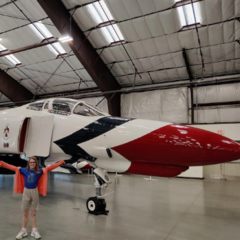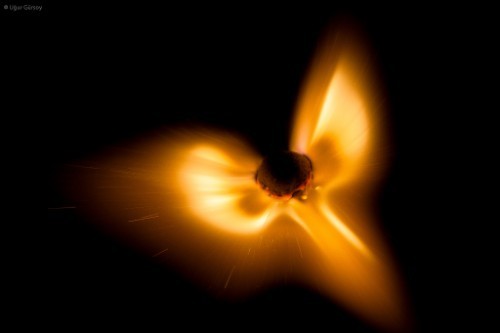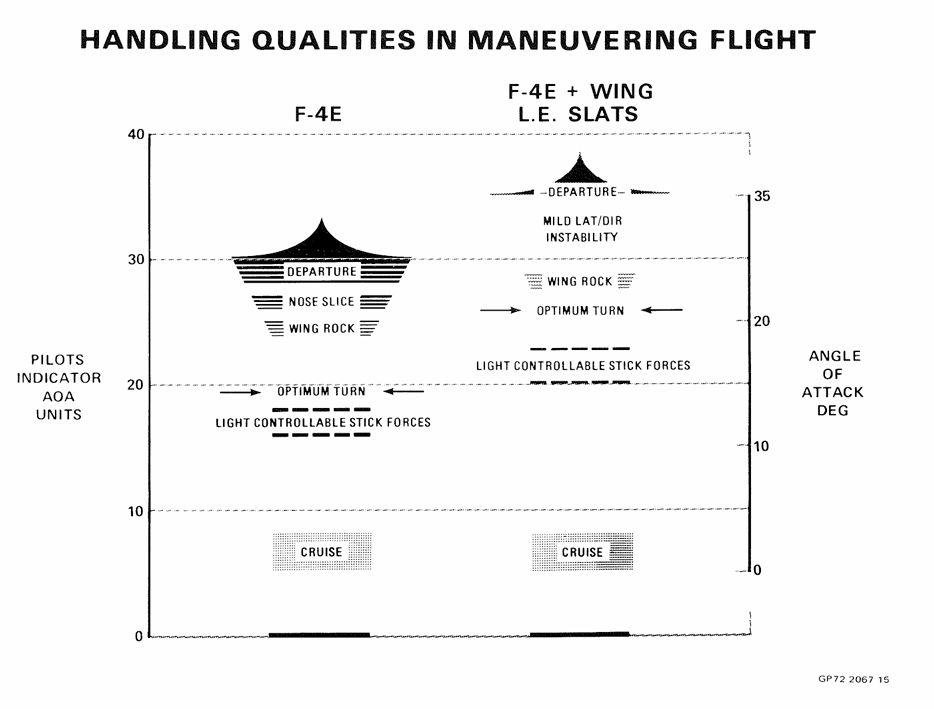-
Posts
77 -
Joined
-
Last visited
-
Days Won
1
Recent Profile Visitors
The recent visitors block is disabled and is not being shown to other users.
-
Regarding G.91 performance - There is an unfortunate dearth of good primary-source performance data for the G91 on the internet. Attempting to satisfy my curiosity, I put together a simple table of physical data to compare the G.91R to F86 and MiG-15. This is all easy enough to find, but I'll leave it here if it saves someone else 15min in Excel. - F-86F-25 G.91R/1B MiG-15bis Clean takeoff weight (lb) 15175 10677 11120 Wingspan (ft) 39.1 28.1 33.1 Wing reference area (ft^2) 313 177 222 Wing Sweep Angle (Deg) 35 37 35 Thickness/chord 11-12% 11-12% 12% Engine J47-GE-27 Orpheus Mk. 803 VK-1 Nominal sea level static thrust (lbf) 6090 5000 5950 Usable internal fuel (lb) 2827 2919 2584 50% fuel weight (lb) 13762 9218 9828 Wing aspect ratio 4.88 4.46 4.93 Takeoff T/W 0.40 0.47 0.54 50% T/W 0.44 0.54 0.61 50% wing loading 44.0 52.1 44.3 50% wingspan/weight 2.84E-03 3.05E-03 3.37E-03 The takeaways in my mind are: The G.91 falls between the F-86 and MiG-15 in both thrust-to-weight and wingspan-to-weight ratios. Since the wings are all a similar ~35% swept profile without leading edge devices, I would be surprised if energy retention, sustained turn rate, and low speed acceleration don't all follow the same trend (i.e. somewhere between the -86 and -15). G.91 wing loading is slightly higher than the -86 and -15, but on the other hand the flight manuals for the G.91 and un-slatted F86F both show 130kt stall speed at takeoff weight without flaps so in reality there doesn't seem to be a difference in maximum lift. G.91R actually carries a lot of fuel for its tiny size (depending on version, either slightly less or slightly more than the Sabre). Amusingly enough, most of this is exactly what you expect from a 3/4 scale model of an F86. Unfortunately due to typical scale-model-aircraft physics that probably also means a notably lower top speed, but I couldn't find a clear and reliable source to confirm how much slower. Basically, it won't match a MiG-15 very well, but it wasn't meant to. For all the contemporary aircraft that can't out-turn it (and that is most of them), the G.91 could be an absolute gremlin to fight in multiplayer. It is absurdly tiny, carries outsized armament (depending on the version), and is apparently extremely forgiving to fly -- basically a trainer with transonic performance.
-
I think it is meant to represent true AoA. One USAF paper on wing rock puts wing-rock-onset of an RF-4C without slats at just under 20deg true AoA, which seems to corroborate. However I don't recall any report in the public domain giving true AoA to indicated 'units' directly. There is one that correlates 'units' to degrees on a test flight noseboom, but not corrected for upwash so still not true free-stream AoA.
-
Easiest way to answer that is with the graphic from MDD's F-4E and F-4S marketing material: This is typical behavior, consistent with USAF documents. Departure is described as gentle everywhere I have read, and when it really occurs depends on Mach, CG, and other variables. In some cases the aircraft may not depart and simply bleed off all its speed and fall out of the sky still under control. Anything over 25 'units' is diminishing returns, hence they never bothered to update the AoA gauge to read past 30.
-
It is not up to us on this forum to decide if the MiG-21 can be a fighter-bomber, but rather the Soviet VVS who equipped many Fighter-Bomber Regiments with them. Take it up with the USSR. As for your other examples: A6M had a dedicated dive-bomber version - the A6M7. Argue that one with the Imperial Japanese Empire. There are entire books written on the Bf-109 as a Jagdbomber, so there is no need for me to write an essay about it here. According the the 1956 USAF F86F SAC "The principal mission of the F-86F airplane is Fighter-Bomber." Su7B of any version, BKL or otherwise, can take 4x 500kg bombs only without external fuel, which is not normal. Dassault on their history page say: "The Mirage III E, ordered on April 6, 1960, was designed for low-altitude air strikes." At least Dassault still exists, so you really could argue with them about this if you wanted. I do not wish to derail this thread any further arguing with one person over the definition of a fighter-bomber. Instead I will patiently wait to enjoy the DCS module flying the specific missions (both A-A and A-G) for which it is suitable, and not the ones (both A-A and A-G) for which it is not suitable.
-
3000lb is heavy for both the F-104G and its direct competitors. The normal load for a single-seat supersonic fighter-bomber in the mid 60s was 2000lb or sometimes less. Not only the F104: MiG-21 2x500kg (people should call it a fighter bomber because that was one of its important missions) Su-7B also 2x500kg originally, option for slightly more later Mirage IIIE just 2x 400kg RNLAF NF-5A 4x 500lb F100D could and did take 4x750lb often, but 2x1000lb was also common. As for the massive F-105D, it had an exceptional payload but that still meant just 6x750lb normally in SEA. Mirage F1 and AJ37 are obviously more advanced airframes. They ought to be, after over a decade of rapid technological progress. F104G speed and avionics stayed impressively relevant though, and if DCS missions are only built around 1970s-80s capability, that is the mission makers' problem. The key is that 1 ton of bombs was just fine for some very important missions. The F104 was expected to handle the kind of target that is given to stealthy cruise missiles today (with 1000lb warheads). That means easy to damage but extremely heavily defended. If it was good at that mission (and it was very very good), the F104G cannot be called 'bad' at air-to-ground in general. Only unsuitable for some specific roles. To answer your other specific questions: A-4F will do 556kt at sea level with single centerline bomb per its SAC. Flight manual charts show the F104G with 3x bombs does around M0.92 = 587kt TAS at 10000ft. A6A with only a centerline Mk28 can do 545kts per SAC. A4F is doing about 560kts (there is no exact chart). F104 with this loading stays very fast up to 20000ft, until above its optimal cruising altitude of 24000ft performance really starts to fall off. However at 25000ft the F104G is still slightly faster (525kts vs 512kts) versus the lightly loaded A6. Conclusion: an F104 without afterburner is always faster than subsonic attackers within its own flight envelope, however it is stuck cruising at FL240 while the slower airframes can cruise much higher for efficiency.
-
You know, I was trying to stay out of this argument. An abnormally heavy conventional bomb load of 3x 1000lb Mk83, along with full internal fuel and empty wingtip tanks, works out to a drag index of 45 and gross weight of 24600lb for the F-104G. From the flight manual charts this gives a top speed in military (non-afterburning) power of M0.89 = 589kts at sea level. A contemporary A-6A can reach no more than 561kts at SL per its S.A.C., even with the lightest payload (single centerline bomb). A contemporary A-4C with one centerline Mk28 is even slower than the A6 (545kts). Navy subsonic attack aircraft can fly higher and further, with more bombs (it would be insane if they couldn't) but during their final run-in to the target, they physically cannot go faster than a badly overloaded F104G in mil power. Then after the F104G drops its bombs, it can easily out-pace any interceptor from the 1960s at low level. The poor A-6 can't even out-run a MiG-15. Also, while it is not usually practical, an F-104G most certainly can carry and release some bombs supersonic. This is specifically and clearly approved by the flight manual. P.S.: Why would an F-104G pilot forget the Hi-Lo-Lo-Hi mission profile he has been taught by the F-104 Fighter Weapons School, after all that effort to learn and practice it?
-
Weapons are no problem, they can be disabled by mission. Systems are the problem, and this is a general DCS issue. If all modules had the ability to hard disable datalink, helmet sight, and GPS per-mission (and countermeasures for all the 70s aircraft in game with 80s-90s chaff/flare dispensers, and 90s TERNAV on the AJS37, etc. etc.), then it would be much less of a pain point for the community to be stuck with one specific example of each aircraft. I understand that for a study sim game, making many similar versions of one airframe is economically unattractive to developers. However some small effort to mitigate this by disabling systems would go 90% of the way to enable an order of magnitude more immersive historical missions.
-
Speed is life -> Starfighter is fast as **** -> Starfighter is life I don't know where the idea comes from that the F104G struggled to carry its payload as a fighter-bomber. It was designed to carry a 2000lb B28, and only carried ~2000lb of iron on a typical conventional mission. Unimpressive for its empty mass, but also not a problem to fly. That's single-digit percent increase in takeoff weight compared to a clean intercept mission with the same fuel. Long-term operational issues in specific peacetime context are important but not directly related to combat capability.
-
Donau Hans started following Smyth
-
Oddly enough this appears to have been fixed in the last major patch for ED aircraft, but not the F4E. However I'm not sure if that needs to be reported here or as an F4 bug.
-
But if the Aero-27/A is really in use, then the bomb should not release through conventional weapon circuits anyway? BRU-5/A being the Aero-27 adapted specifically for Mk84 and M118 instead of 'special weapons' (T.O. 1F-4-750 according to F4C NNWD manual), it would be strange if it were not used here. If BRU-5 is in use, then the CL tank light should stay on regardless but do nothing, as the forward Aim-7 should be firing even with the single bomb in place.
-
I had a similar issue and eventually noticed that the default keybind for both of those commands was 'LShift + D'. At first the persistent red exclamation point would completely block the pinky switch radar selection on joystick buttons, and no combination of disabling/enabling/re-scanning devices fixed it reliably. After starting over and deleting those double-assigned keybinds first, the situation improved but was not completely resolved. Now I only have to go to control manager and choose 'rescan devices' every time I start the game, which has been working reliably. I don't know if that will work in your situation. Edit - confirmed experimentally that this can be fixed completely by updating line 193 in "DCSWorld\Mods\aircraft\F-4E\Input\F-4E-Pilot\keyboard\default.lua" From: { name = _('Wheel Brake (Left)'), combos = combo('D', 'LShift'), pressed = iCommandLeftWheelBrake, up = iCommandLeftWheelBrake, value_pressed = -1, value_up = 1, category = { categories.gears_brakes_hook, categories.pedals } }, To: { name = _('Wheel Brake (Left)'), combos = combo('D', 'LCtrl'), pressed = iCommandLeftWheelBrake, up = iCommandLeftWheelBrake, value_pressed = -1, value_up = 1, category = { categories.gears_brakes_hook, categories.pedals } }, Then fixing the .diff file in 'Saved Games' folder to work with that. However this is still not a great solution because DCS updates will likely break the keybind again. There must be some reason that most players are not experiencing this, but I cannot figure out what it could be.
-

[2.9.5.55300] SUU-23 Gunpods not boresighted along FRL
Smyth replied to DSplayer's topic in Bugs & Problems
Can you please clarify specifically if you are saying this is intended behavior (gunpods zeroed in different locations)? Is it documented somewhere? Thanks. -

[2.9.5.55300] SUU-23 Gunpods not boresighted along FRL
Smyth replied to DSplayer's topic in Bugs & Problems
The nose gun is definitely supposed to be at RBL (-2deg from FRL). What the F4C/D/E section on -E nose gun says specifically is "The nose gun is harmonized with the optical sight for an optimum firing range of 750 yards (2250 feet). During harmonization, the sight is depressed 2.0 degrees from fuselage reference line." Note that it shouldn't be shooting exactly parallel to the RBL, but zeroed to the sight at a set range (just like a rifle). F-4C manual is less clear about gunpod vertical harmonization, but F-4B Mk4 gunpod was also harmonized to RBL, so it's hard to imagine the SUU-23 pointing anywhere else.









